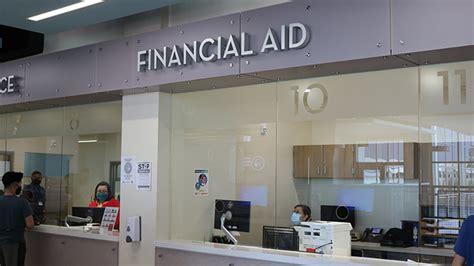The East Carolina University Financial Aid Office serves as a beacon of support for students navigating the intricate landscape of higher education financing. Through a holistic approach, the office strives to provide personalized assistance, empower students to make informed financial decisions, and ensure that financial barriers do not impede their academic pursuits.

Types of Financial Aid Available
ECU offers a wide array of financial aid options to cater to the diverse needs of its student body:
- Grants: Need-based awards that do not require repayment.
- Scholarships: Merit-based awards based on academic achievement, extracurricular activities, or other criteria.
- Loans: Borrowed funds that must be repaid after graduation or withdrawal from the university.
- Work-Study Programs: On-campus or off-campus employment opportunities that allow students to earn money to offset their educational expenses.
Eligibility and Application Process
To be eligible for financial aid, students must:
- Be enrolled in a degree program at ECU.
- Demonstrate financial need.
- Submit a Free Application for Federal Student Aid (FAFSA) by the priority deadline of March 15th.
- Maintain satisfactory academic progress.
Financial Aid Counseling and Support
The Financial Aid Office provides personalized counseling services to help students:
- Understand their financial aid options.
- Complete financial aid applications.
- Manage their student loan debt.
- Explore alternative financing options.
- Utilize financial literacy resources.
Strategies for Financial Success
To maximize their financial aid opportunities, students should:
- Apply for aid early.
- Submit a complete and accurate FAFSA.
- Consider all available aid options.
- Repay student loans strategically.
- Cultivate financial literacy.
Tips and Tricks for Navigating Financial Aid
- Keep track of your financial aid status.
- Communicate regularly with the Financial Aid Office.
- Utilize campus resources for financial assistance.
- Consider part-time employment or internships.
- Negotiate payment plans with your lenders.
Frequently Asked Questions (FAQs)
-
When is the deadline to apply for financial aid?
– March 15th. -
What is the expected family contribution (EFC)?
– The amount of money your family is expected to contribute to your education. -
How can I appeal my financial aid package?
– Contact the Financial Aid Office to discuss your circumstances. -
What types of loans are available for students?
– Direct Subsidized Loans, Direct Unsubsidized Loans, and PLUS Loans. -
How can I repay my student loans effectively?
– Choose a repayment plan that fits your budget and explore loan consolidation options. -
What resources are available for financial literacy?
– The Financial Literacy Program, University Money Management Center, and Student Money Management Center offer workshops, counseling, and other support.
Contact Information
East Carolina University Financial Aid Office
Brewster A. Shaw Building, Suite 2200
Greenville, NC 27858
Phone: (252) 328-6411
Email: [email protected]
Website: www.ecu.edu/financialaid
Tables
Table 1: Financial Aid Types and Amounts
| Type of Aid | Award Range |
|---|---|
| Pell Grant | Up to $6,895 |
| Federal Supplemental Educational Opportunity Grant (FSEOG) | Up to $4,000 |
| North Carolina Education Lottery Scholarship | Up to $2,500 |
| ECU Academic Excellence Scholarship | Up to $4,000 |
| Direct Subsidized Loan | Up to $3,500 for first-year students |
| Direct Unsubsidized Loan | Up to $6,500 for first-year students |
Table 2: Repayment Options for Student Loans
| Repayment Plan | Features |
|---|---|
| Standard Repayment Plan | Fixed monthly payments over 10 years |
| Graduated Repayment Plan | Payments increase gradually over 10 years |
| Extended Repayment Plan | Lower monthly payments over 12-25 years |
| Income-Driven Repayment Plan | Payments based on your income |
Table 3: Financial Literacy Resources
| Resource | Description |
|---|---|
| Financial Literacy Program | Offers workshops, counseling, and online resources |
| University Money Management Center | Provides one-on-one financial counseling and budgeting assistance |
| Student Money Management Center | Offers workshops, online tools, and peer financial coaching |
Table 4: Effective Strategies for Financial Success
| Strategy | Benefits |
|---|---|
| Apply for aid early | Increases your chances of receiving maximum aid |
| Submit a complete and accurate FAFSA | Ensures that your financial need is accurately assessed |
| Consider all available aid options | Explore all grant, scholarship, loan, and work-study opportunities |
| Repay student loans strategically | Choose a repayment plan that fits your budget and consider loan consolidation |
| Cultivate financial literacy | Develop the skills and knowledge necessary to manage your finances effectively |
